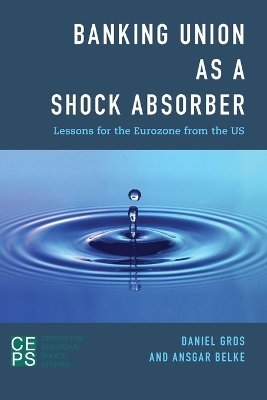
Banking Union as a Shock Absorber
Lessons for the Eurozone from the US
Seiten
2015
Rowman & Littlefield International (Verlag)
978-1-78348-595-6 (ISBN)
Rowman & Littlefield International (Verlag)
978-1-78348-595-6 (ISBN)
This study investigates the shock-absorbing properties of a banking union. It makes a detailed comparison between the way in which banking unions have absorbed regional financial shock at the federal level in the USA, but have led to severe regional (national) financial dislocation and tensions in Europe, particularly within the Eurozone.
The Great Financial Crisis, which started in 2007-08, was originally called the ‘sub-prime’ crisis because its origins could be traced to excessive lending in the real estate sector in the US, concentrated mostly in sunbelt states like Nevada, Florida and California. There were similar pockets of excess lending for housing in Europe, notably in Ireland and Spain. But a key difference emerged later: in Ireland and Spain, the local banking systems almost collapsed and the governments experienced severe financial stress with large macroeconomic costs. Nothing similar happened in the US. The local financial system remained fully functional and the local governments did not experience increased financial stress in the states with the biggest real estate booms, like Nevada or Florida.
This book illustrates how the structure of the US banking market and the existence of federal institutions allowed regional financial shocks to be absorbed at the federal level in the US, thus avoiding local financial crisis. The authors argue that the experience of the US shows the importance of a ‘banking union’ to avoid severe regional (national) financial dislocation in the wake of regional boom and bust cycles. They also discuss the extent to which the institutions of the partial banking union, now in the process of being created for the euro area, should be able to increase its capacity to deal with future regional boom and bust cycles, thereby stabilising the single currency.
The Great Financial Crisis, which started in 2007-08, was originally called the ‘sub-prime’ crisis because its origins could be traced to excessive lending in the real estate sector in the US, concentrated mostly in sunbelt states like Nevada, Florida and California. There were similar pockets of excess lending for housing in Europe, notably in Ireland and Spain. But a key difference emerged later: in Ireland and Spain, the local banking systems almost collapsed and the governments experienced severe financial stress with large macroeconomic costs. Nothing similar happened in the US. The local financial system remained fully functional and the local governments did not experience increased financial stress in the states with the biggest real estate booms, like Nevada or Florida.
This book illustrates how the structure of the US banking market and the existence of federal institutions allowed regional financial shocks to be absorbed at the federal level in the US, thus avoiding local financial crisis. The authors argue that the experience of the US shows the importance of a ‘banking union’ to avoid severe regional (national) financial dislocation in the wake of regional boom and bust cycles. They also discuss the extent to which the institutions of the partial banking union, now in the process of being created for the euro area, should be able to increase its capacity to deal with future regional boom and bust cycles, thereby stabilising the single currency.
Daniel Gros is Director of CEPS. Ansgar Belke is Associate Senior Research Fellow at CEPS and Ad Personam Jean Monnet Professor of Macroeconomics and Director of the Institute of Business and Economic Studies (IBES) at the University of Duisburg-Essen.
Foreword / Introduction / 1. The Macroeconomic stabilization properties of a banking union: Case studies / 2. Foreign-owned banks: A banking union sustitute? The EU experience / 3. Who pays for the shock absorbers? / 4. Fiscal union and financial shock absorbers / Conclusion
| Verlagsort | London |
|---|---|
| Sprache | englisch |
| Maße | 151 x 231 mm |
| Gewicht | 172 g |
| Themenwelt | Wirtschaft ► Betriebswirtschaft / Management ► Finanzierung |
| Betriebswirtschaft / Management ► Spezielle Betriebswirtschaftslehre ► Bankbetriebslehre | |
| Wirtschaft ► Volkswirtschaftslehre ► Finanzwissenschaft | |
| Wirtschaft ► Volkswirtschaftslehre ► Wirtschaftspolitik | |
| ISBN-10 | 1-78348-595-7 / 1783485957 |
| ISBN-13 | 978-1-78348-595-6 / 9781783485956 |
| Zustand | Neuware |
| Haben Sie eine Frage zum Produkt? |
Mehr entdecken
aus dem Bereich
aus dem Bereich
Praxisnahe Einführung mit zahlreichen Fallbeispielen börsennotierter …
Buch | Softcover (2020)
Vahlen (Verlag)
CHF 34,85


